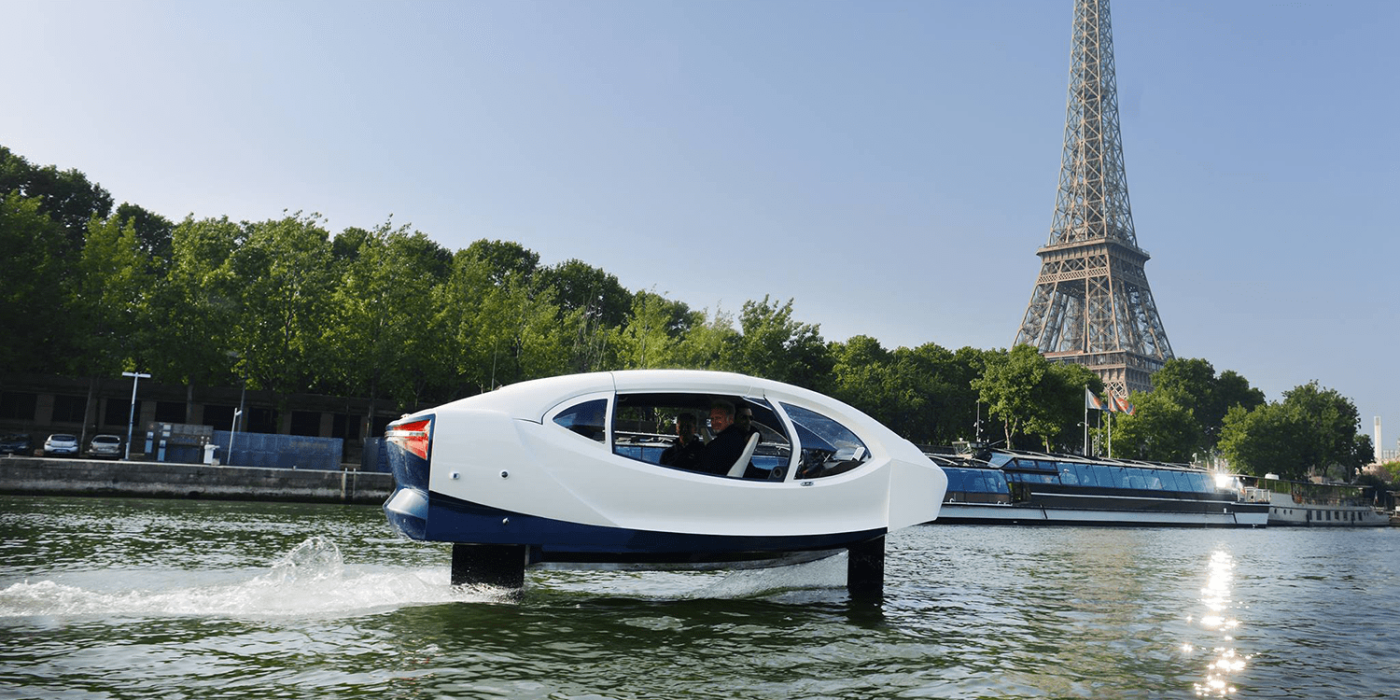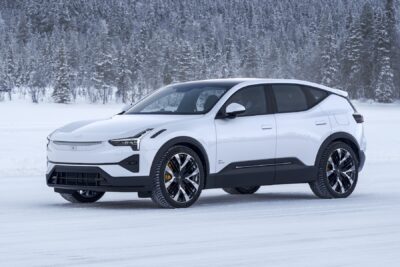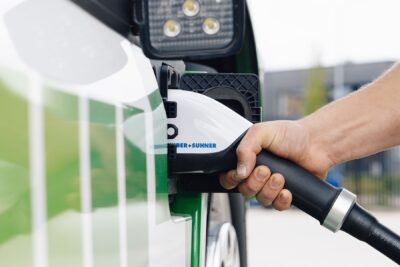Silent and (legally) speedy
An electric water taxi developed by the French startup SeaBubbles was stopped by the police during a test drive on the Seine in Paris under suspicion of speeding. But while the Seine normally has a speed limit of 12 km/h, the SeaBubbles prototype hydrofoil had already been granted a special permit for the “flying” water taxis for speeds of up to 30 km/h.
With a glance at the startup’s website, it becomes clear why the hydrofoil water taxi has to be able to go faster than 12 km/h – The company says: “When reaching 12 km/h (7.5 mph), the Bubble will start flying above the water,” which presumably decreases the water-resistance to the fully electric vehicles well as sparing passengers “any seasickness, sudden movements or waves rolling.” Needless to say, the vehicle is considerably quieter and not smelly, like combustion-powered watercraft. The makers point out that this water taxi can alleviate city traffic without overburdening the existing infrastructure.
SeaBubbles say they have made the vehicle with elements from the nautical, car and aeronautic industries, which is also clear from the hydrofoil taxi’s appearance. The vehicle is part of a “virtuous ecosystem” made up of the water-taxi they call the “Bubble”, the “Dock” which is like a mini wharf or quay with its own renewable energy sources, and an App.
Other watercraft makers are using similar hydrofoil mechanisms. The WaveFlyer, for example, is a hydrofoil jetski, and this electric surfboard also rides above the water. SeaBubble’s flying water taxi, however, seats four people and has a quite pragmatic transport function. The 100% electric watercraft has a top speed of 46 km/h (25 knots). By next year, the company plans to have these working in France, the United States and Holland.





0 Comments